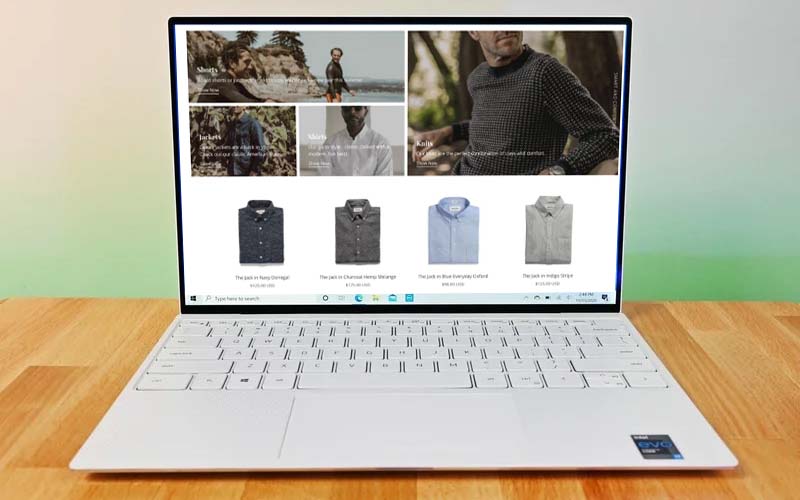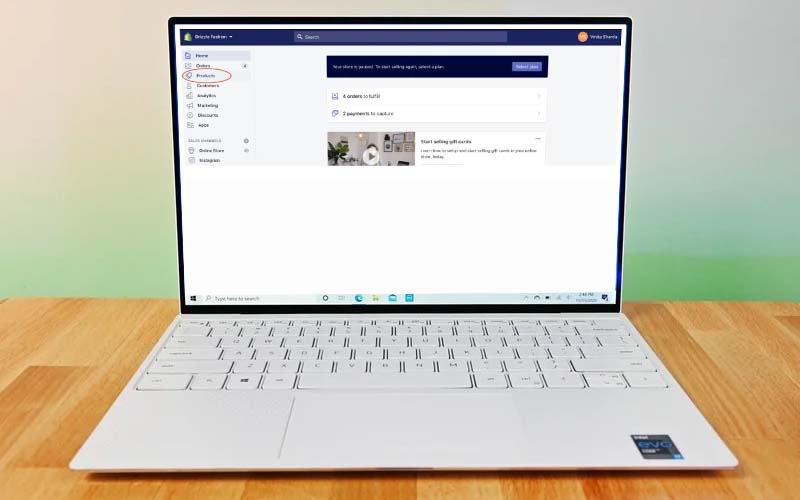The fashion and apparel business is no stranger to the ravages caused by the pandemic. In addition to the losses due to low footfalls in limited shop timings, the store expansion plans have taken a backseat with the second covid wave.
ICRA (Investment Information and Credit Rating Agency) estimates that the complete revival of the Indian fashion and apparel business is now delayed to 2022-2023 due to the unprecedented rise in infections since March 2021. Albeit to start from a lower base, it is expected that in 2022 the fashion and apparel businesses might be on double-digit growth, achieving 85-95 percent of the pre-COVID turnover levels. This growth can be attributed to vaccination rollout, eventually increasing the out-of -home consumption. Since the vaccination activities in India are happening at a turtle’s pace, the full-fledged opening of malls and stores might be subjected to prolonged delays.
The industry is also facing headwinds due to mounting rental costs and enormous inventory pile-up of Spring-summer collection resulting in being spread out for a longer period and therefore, pausing the production of the autumn-winter collection.
Fashion and apparel owners by now must digest the fact that in the new normal, trends like online shopping, a virtual workforce, small gatherings in weddings and festivals, and small home parties are here to stay. The preventive measures to contain the virus have brought a host of new changes in consumer lifestyle and shopping behaviour that brands need to unlock and align accordingly.
This leaves the fashion and apparel industry to seek refuge in online channels to insulate itself from losses and inch closer to consumers. Pivoting to online channels will also aid the fashion and the apparel industry to discern new target groups from rural India as internet users are ballooning more than two times that of urban dwellers on a year-on-year basis as per the IAMAI-Kantar Cube report. The growth of mobile internet led by rural India will give impetus to online shopping.
High Street Fashion and Apparel Brands Hopping on to ‘Online’ Bandwagon
The pandemic has not spared the international and national high street fashion brands. They are introducing a clutch of initiatives to enable customers to purchase apparel within the comfort of a click. Shoppers Stop has recently launched more than 100 exclusive brands on its online channel, the range introduced there will not be available with fashion aggregator apps or offline stores. Forever New has introduced its range of relaxed and casual outfits for consumers working from home and has kept steep discounts and slab-based offers on its online stores to entice consumers to shop more. It has witnessed a spike of 15-20 percent sales since its pre-pandemic levels. Similarly, United Colors of Benetton plans to launch its online storefront by July-August 2021.
The pandemic created a lesser headroom of demand in the wedding wear and formal wear category, which became a matter of concern for Raymond. Raymond quickly sensed the urgency of online presence for revival and launched its digital shop myraymond.com. It is also planning to bring onboard many brick and mortar fashion stores and bolster its digital store.
‘‘
ICRA estimates that the complete revival of the Indian fashion and apparel business is now delayed to 2022-2023.
Why Should Fashion and Apparel Move Online?
The fashion and apparel business predominantly thrived on a ‘touch and feel’ experience but now to swim against the tide it needs to rethink its functioning from its conventional channel. For fashion and apparel businesses there are two methods by which one can grow their online business – through fashion aggregators such as Amazon, Flipkart, Myntra, or owning an independent website or app. Owing to its extensive reach, the former one dominates the online sales but a significant revenue is sacrificed to commission resulting in low margins. Besides low margins the apparel sellers are left with no autonomy in pricing as they force brands to display slashed prices and take up accountability for returns. Fashion and apparel businesses foraying into launching independent e-commerce sites will increase profitability, gain consumer insights from data accession, aid in targeted marketing and act as an efficient marketing tool.
Journey of an online shopper buying fashion and apparel
This is how a typical online shopper’s journey would look in the digital era for purchasing fashion and apparels:
- Customers will identify and find the apparels they want to purchase and pay online.
- To maintain minimal contact, the customer prefers the no-touch delivery option or store pick-up.
- Once the owners receive the order, they begin with the process of dispatching.
- If the customer chooses store pick-up after placing an order on your fashion and apparel online store, they will arrive at the store and pick up the order at the date mentioned.
- If the customer selects no-touch doorstep delivery, the delivery partner will pick up the order from the store and make the delivery.
Starting an Online fashion and apparel store with Shopify
- Signing up with Shopify
Business owners should sign up on Shopify with an email address that will be used for the overall management of admin tasks related to the store. Pick a domain name for your online store which is of the same name as the offline store. For example – if the name of the offline store is ‘ ABC’ the online store name will follow as: www. ABC. myshopify.com. The domain can be personalised further.
- Designing the store
Choose a theme or design template for the online store that is suitable with the apparel type we are selling and should be reflecting the brand. For selecting themes, go to the Shopify dashboard to click on ‘ online store’ to explore all the themes free and paid. For an online fashion and apparel store themes names like – Minimal, Brooklyn and Modular are most apt.
- Navigation for the website
The store website needs to have navigations as it ensures that the website is accessible and user-friendly. Organised and transparent navigation enables a customer to explore products on the website with ease and gives them complete information about the store and what products they can receive.
To customise navigation, users can go to the Shopify dashboard to click on ‘Online store’ to select ‘navigation’ from the dropdown. By clicking on the ‘main menu’ we can customise the top menu bar by adding pages -about us, products, accessories, etc. by clicking on ‘add menu item’. Add a short name for the menu item and paste the relevant link. Once all the relevant links have been added to the menu navigation, click on ‘Save Menu’.
- Adding Website pages
Online businesses of any vertical must establish transparency in communication with their visitors and instill belief in the brand. It is a must for an online store website to have pages like – About Us, Contact page, Shipping and returns policy, and hygiene standards maintained. To add pages in your Shopify store, one needs to click on ‘Pages’ under ‘Online Store’ to click on Add Page. After adding the page, we can name it as per what we want to show and edit the searching engine preview including the page URL. After the editing, click on ‘Save’ to create the page.
- Adding the images of Apparel
In Shopify, images of apparel can be uploaded manually as well as using a product spreadsheet. For manual addition, go to the store admin and click on ‘Products’ from the left-hand side menu bar and click on the ‘add products’ button present at the top right of the dashboard to begin uploading images by including the product description. category/collection, pricing, inventory, etc. In the case of large inventory, we can add products from the spreadsheet by clicking ‘import’ on the product page and then click on ‘ Add file’ to upload the spreadsheet. Lastly, one should revisit all the images to ensure that the product page URLs are SEO optimised, short and crisp that have no spelling errors.
- Creating the ‘Phygital Experience’
The confusion that we fall into by staring at the screen to find out the appropriate apparel size fits is one of the main reasons for cart abandonment. To deliver a unique and seamless shopping experience resembling an offline store, we need to offer assistance to online shoppers. The online apparel store must have a measurement chart, live chat customer grievances, product videos, virtual try-on, Text on product videos, video calls, etc. Using apps such as Tidio for live chat, Typito for text on product videos, and Virtuooal for virtual try-on from Shopify’s apps store will help owners implement these assistance tools on the store’s website with ease. For videos, Shopify has a default feature to add product videos to the pages.
- Customising the cart
Business owners should know this, the checkout page of an e-commerce website must be devoid of distractions and should contain a clear call to action – Pay Now. The cart page should list down the products and the pricing the customer has selected. To choose cart type owners can select either drawer or page by clicking on ‘Cart’ from theme settings. We can also add order notes to allow shoppers to add special instructions such as -gift wrapping needed or greeting card to be added, etc.
- Adding Payment Methods
Contactless payments are becoming ubiquitous. In Shopify, we can set up multiple payment options to allow shoppers to select the payment type of convenience. This makes it easier for them to complete the purchases online. For adding payment methods to the online store, click on ‘Settings’ and select ‘Payment Providers’.
‘‘
Owning independent websites helps business gain autonomy over margins and increase savings.
What is in it for the offline fashion and apparel business?
Fashion sales through online shopping are promising in India since we have a young, tech-savvy population, believers of convenience, and aspire to own the latest fashion styles. The increasing number of internet users from smaller cities and towns and the recent pandemic will catalyse more online fashion shopping. Therefore, it is imperative for fashion and apparel brands that primarily began offline, to create a phygital experience where the lines of offline and online buying are blurred and offer myriad fashion options to a consumer to purchase conveniently.
So, without much ado, lets open up the online store with Shopify.






